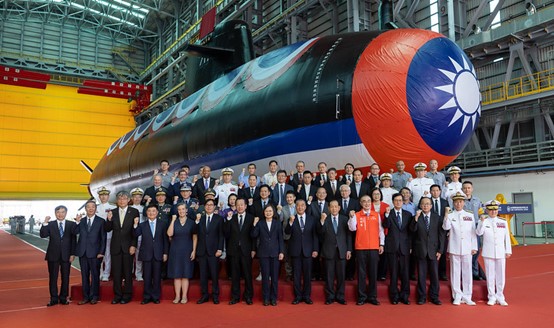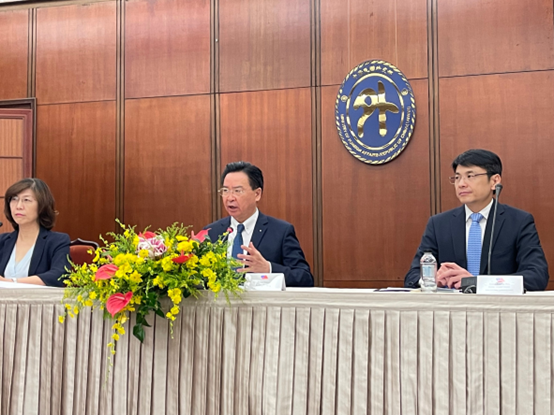[애플경제 Adela Lin 대만특파원]

Taiwan launched its first domestically built submarine in a bid to enhance its defense capabilities amid escalating threat from China.
President Tsai Ing-wen presided over the Christening ceremony held on Sept. 28 in the Kaohsiung City of southern Taiwan to name the diesel-electric powered prototype vessel “Hai Kun”, or “Narwhal.” She said: “building indigenous submarines is more than a goal, it is a concrete realization of safeguarding our country.”
Tsai said submarines are vital for Taiwan’s navy in terms of strategy and tactics to develop "asymmetric combat power." She assigned the indigenous submarine program to the navy in 2016. The vessel, with a cost of NT$49.36 billion (US$1.53 billion), will have to go through equipment installation, testing and seal trial before it can be commissioned in 2025. Taiwan Navy now has two full combat ready Chien Lung-class submarines which were purchased from the Netherlands.
“In addition to procuring weapons from oversea, defense autonomy is needed to continuously update combat capabilities so that our national defense can be more resilient,” Tsai told the audience including Korean Mission in Taipei Representative Lee Eun-ho (駐台北韓國代表部代表李殷鎬), American Institute in Taiwan Director Sandra Oudkirk (美國在台協會台北辦事處處長孫曉雅), and Japan-Taiwan Exchange Association Deputy Representative Okajima Hiroyuki (日本台灣交流協會副代表岡島洋之).

Taiwan Foreign Minister Joseph Wu (外交部長吳釗燮) told foreign reporters in Taipei on Thursday that the island has to deal with the everyday military threat coming from China. Therefore strengthening overall defense capabilities is a must. “Having a new submarine is one of those strategies.” He advocates Tsai administration’s strategy on locally built submarines because “that’s needed for Taiwan to deter war from taking place.”
Chieh Chung (研究員揭仲 ), a research fellow with Taiwanese thinktank Association of Strategic Foresight (中華戰略前瞻協會) said the expansion of the submarine force will obviously increase defense capabilities. The island’s defense authority earlier estimated a combined 10 submarines could be needed in order to counter against PLA attacks. That could justify the Navy’s ultimate goal of having a total of eight domestically developed submarines, he said.
However, the number of new homegrown submarines which can be actually achieved will depend on how many sets of combat systems Washington agrees to provide. The combat system of Taiwan’s new submarine comes from the U.S., Chieh reasoned.
Tensions across the Taiwan Strait have escalated since U.S. House of Representatives Speaker Nancy Pelosi visited Taiwan in August 2022. The island’s Ministry of National Defense tracked 103 People’s Liberation Army warplanes and 9 vessels in the waters and airspace around Taiwan in 24 hours from 6 a.m. on Sept. 17. Forty of the detected aircraft crossed the de facto median line of the Taiwan Strait or entered Taiwan’s air defense identification zone (ADIZ) in the southwest and southeast.
Taiwan’s attempt to use submarines to prevent PLA from entering the Pacific Ocean is simply something impossible and it’s an idiot’s nonsense, China’s Ministry of National Defense spokesman Wu Qian criticized.
Beijing views the self-ruled Taiwan as part of its territory and has never ruled out of using forces to bring it under control.

